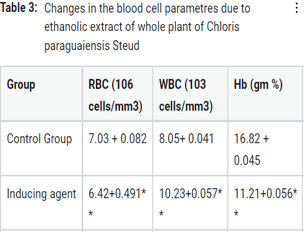Abstract
Arthritis is a widespread disorder that occurs in elderly patients currently in the world. It is one of those disorders that affect the joints and is classified as an inflammatory disorder that is a result of immune system malfunctioning. Taking into consideration the side effects of immune suppressants that are used to treat arthritis; generally, plants are being investigated for the chemical constituents to treat the diseases. It is proved that moieties obtained from herbal sources are relatively safer and potent too. The economical methods of treating illness are using plants, and so the herbs are investigated for the treatment of arthritis. Chloris paraguaiensis Steud., is one of the members of grass family which is grown wildly in tropical countries all around the world. It usually grows like a weed and can be employed for many pharmacological problems. Traditional claims are there to treat DM, Rheumatism and diarrhoea. Chemical constituents like flavonoids, tannins and phenols have been isolated from the plant earlier. Cloris was selected as a subject to investigate its anti-arthritis potential in vivo using experimental animals following the folklore claims that the plant can be used to treat arthritis. It may be due to the presence of flavonoids and polyphenol-rich chemical constituents in the plant. The exact mechanism of action is to be established and the extracts in this current study showed a significantly comparable activity with that of the standard drug indomethacin.
Full text article
Authors

This work is licensed under a Creative Commons Attribution-NonCommercial-NoDerivatives 4.0 International License.

